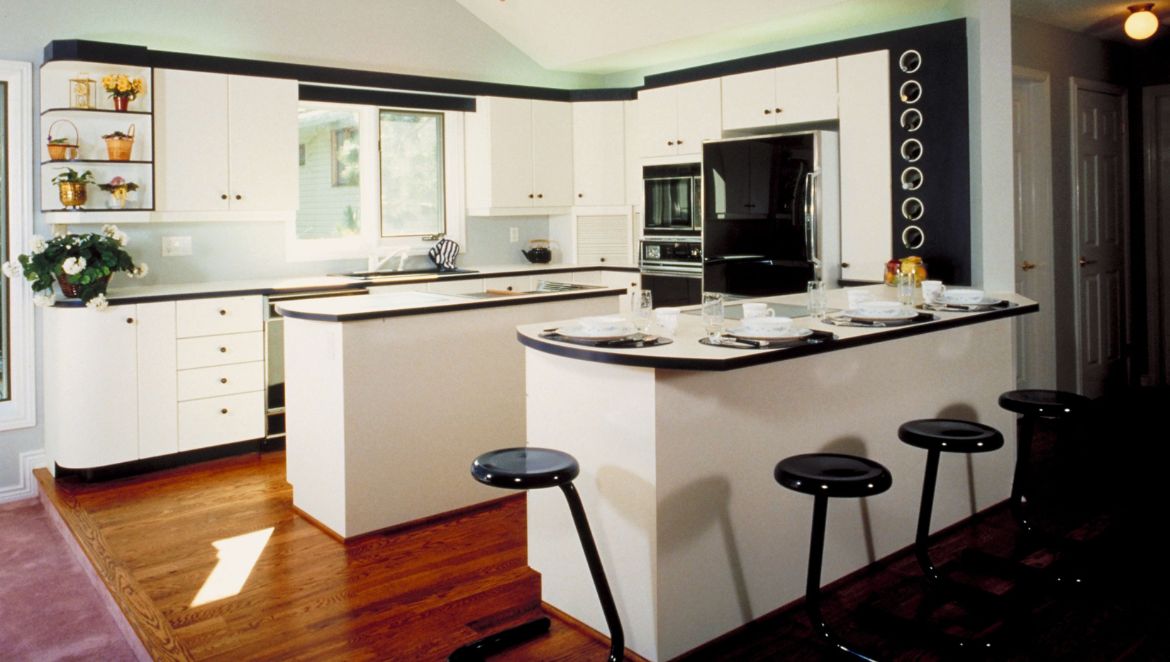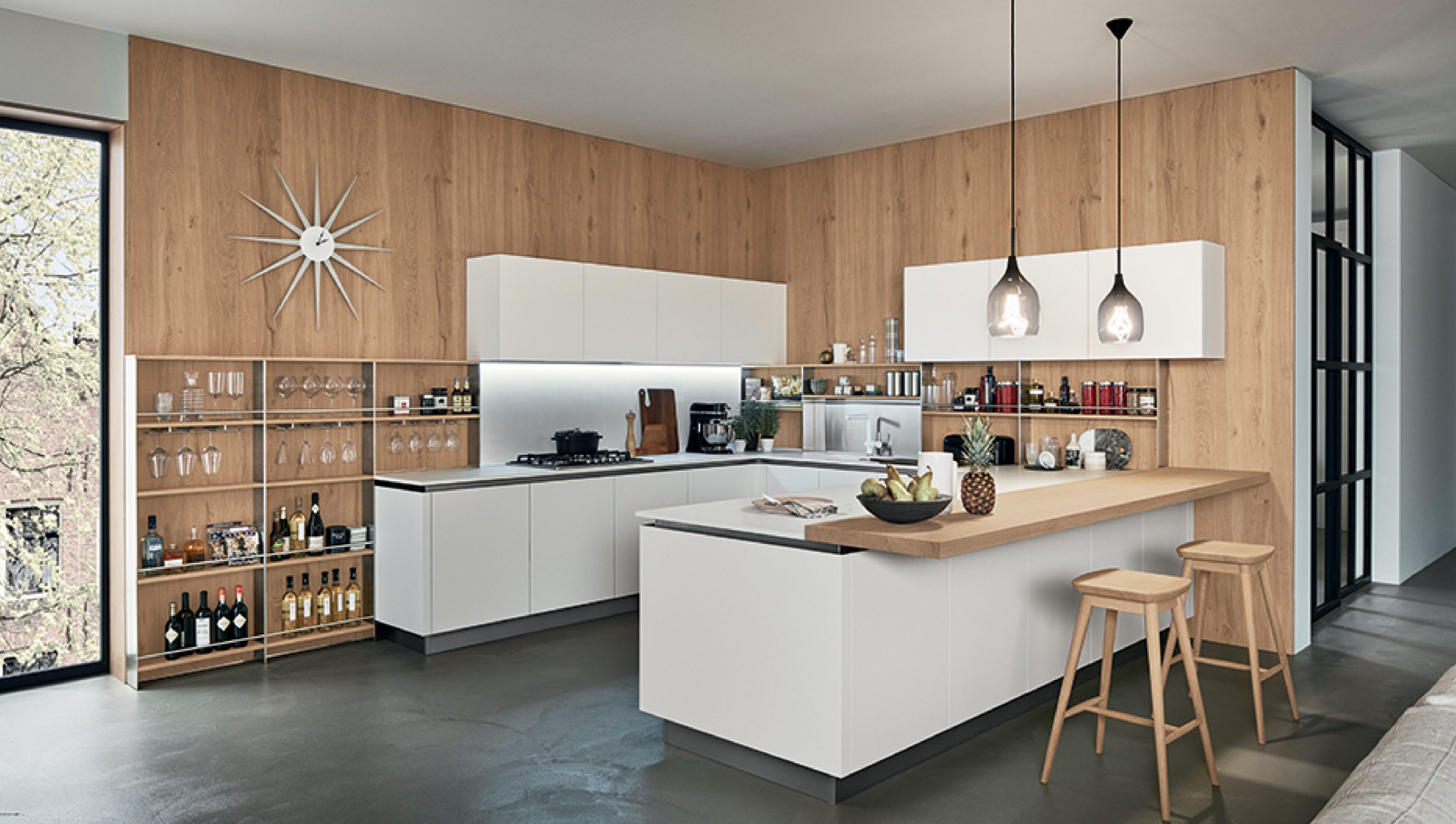
As popular as Modular Kitchens are today, all over the world, let’s begin with the absolute basics. Firstly, what makes a kitchen modular? A modular kitchen refers to a modern kitchen that has been built in ‘modules’ or units. A modular kitchen allows you to select elements of standard sizes designed to maximise utility and allow for efficient space management by combining wall units and base units. While the advantages and types of modular kitchens will be discussed in further detail in the blog, by definition, modular kitchens are incredibly flexible and hence best suited for everybody.
Modular kitchens combine various elements such as cooktop and appliances, the wet area, and storage in wall units, floor units, tall-storage cabinets, hidden-gadgets spaces, etc. The ability to construct a whole kitchen from a wide range of choices of its components allows for the absolute best usage of the available space. With the ability to rearrange units, the kitchen can also be designed in relation to the doors, windows, or glass walls in the space.
You can choose from the different types of modular kitchens, including
Straight Line Kitchens: A straight modular kitchen gets its name from the straight-line layout of the three main parts of the kitchen; sink, hob, and refrigerator.
L- Shaped Kitchens: L-shaped kitchens are the most commonly used kitchen layout for kitchens without a lot of space due to the compact but discreet and versatile ability to use the maximum area for storage.
U Shaped Layout: U-shaped modular kitchens are designed with the most efficiency in mind. It provides a practical working triangle and abundant space for storage and working. These kitchens are perfect for big houses with a lot of space available for the kitchens.
,
Island Layout: Highly adaptable; these give you the ability to use your kitchen space as you see fit. The ideal design of a modular island kitchen combines a straight and L-shaped layout having a disconnected island in the centre.
Parallel kitchen layout: A parallel modular kitchen is designed by keeping one of the three components, hob, sink, and refrigerator, parallel to the other two. These kitchen arrangements divide the working space in the kitchen by splitting it into separate areas for wet and dry work.
G-Shaped Kitchens: A g-shaped kitchen is similar to an island kitchen but the island, in this case, is joined to the counter and mostly acts as a breakfast table.
By providing the opportunity to choose the kitchen style most suitable to your space, needs, and spending, modular kitchens are acceptably superior to other choices. They are highly flexible and easy to install without limiting the colours, patterns, and materials used. Long-lasting and durable, they are also easy to clean and maintain. With compartmentalised spaces for each function, modular kitchens are extremely convenient to work in and look stunning.
Modular kitchens are practically god sent, and if you still don’t believe it, a glance at Veneta Cucine kitchens are sure to change your mind. Elegant and supremely functional, VC kitchens will last forever.

© Veneta Cucine 2024
WhatsApp us